Table of contents:
Virtual Reality in the Oil and Gas Industry: Key Trends
The oil and gas industry stands apart from others because of a large number of factors. Safety risks, politics, industry regulations, changing markets — all of these influences present challenges for oil and gas businesses. Relatively high revenues allow the industry to be among the first to adopt new technologies such as augmented reality and virtual reality.
Virtual Reality in the Oil and Gas Industry: Key Trends
It’s not surprising that this industry has turned to modern technologies that emphasize efficiency, relying on highly skilled and trained individuals working within well-developed software ecosystems that ease the burden of routine tasks and bring about better results.
Companies in the oil and gas field often implement Virtual Reality. In this article, we will examine key trends in the use of VR, use cases for applying immersive technologies, and a success story about how HQSoftware partnered with an oil and gas company for custom VR app development.
According to Technavio’s report, the need for advanced technologies is a key driver for the oil and gas industry.
And one of the most important technologies is VR, which is deployed in a variety of important tasks in these three main categories:
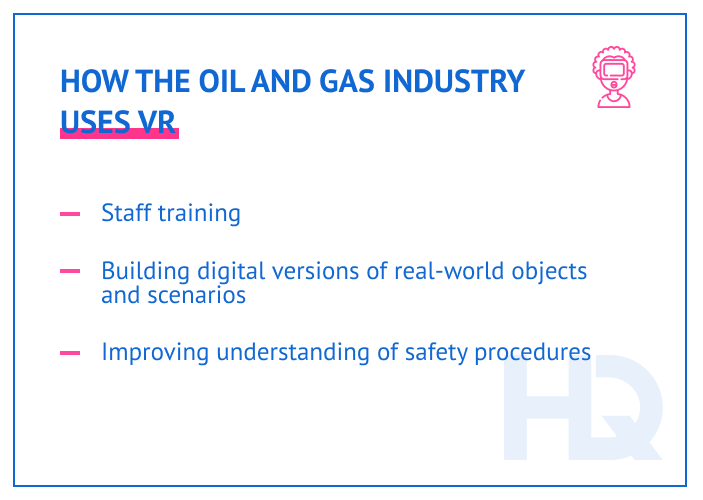
According to research by GlobalData, the leading adopters of VR in the oil and gas industry are giants such as BP, Chevron, Shell, and Saudi Aramco. These companies are using VR for all operations, at the upstream, midstream, and downstream levels.
For example, these companies are investing in virtual subsurface mapping of prospective exploration sites. This helps in prior observation of the terrain before drilling. We will discuss even more use cases later.
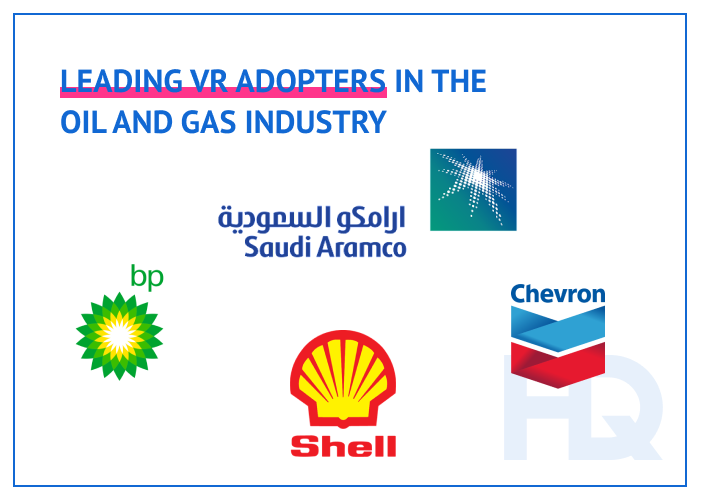
It’s clear major petroleum companies and others in the oil and gas industry are using Virtual Reality solutions extensively to solve day-to-day problems and global tasks.
Let’s look at some of the many benefits of VR for the industry in a variety of iuse cases.
VR can lend a hand to IoT solutions, a partnership that can be used to create more advanced systems.
For example, companies put sensors and gadgets on plant equipment and other infrastructure objects to gather as much data as possible. This increases operations visibility and aids in decision-making.
All this data is then compiled to build a Digital Twin of a plant and all the equipment inside it —- a digital copy that offers a thorough simulation of a plant’s operations.
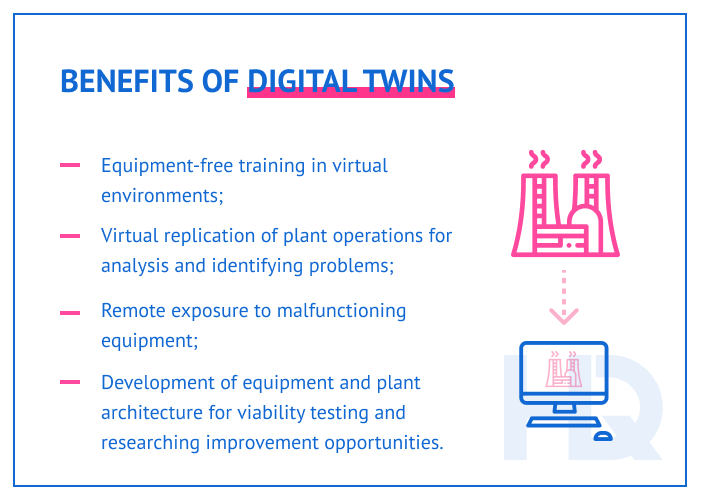
Digital Twins can provide a ton of benefits:
VR is capable of replicating a wide range of plant and equipment situations and details, helping oil and gas businesses foresee emergencies, build and test virtual models, and even educate employees.
VR is a great tool for product development as well. It allows for using 3D rendering to simulate digital designs and offers the opportunity to test the results long before the manufacturing stage starts.
VR can even be integrated with 3D printing to develop prototypes right away.
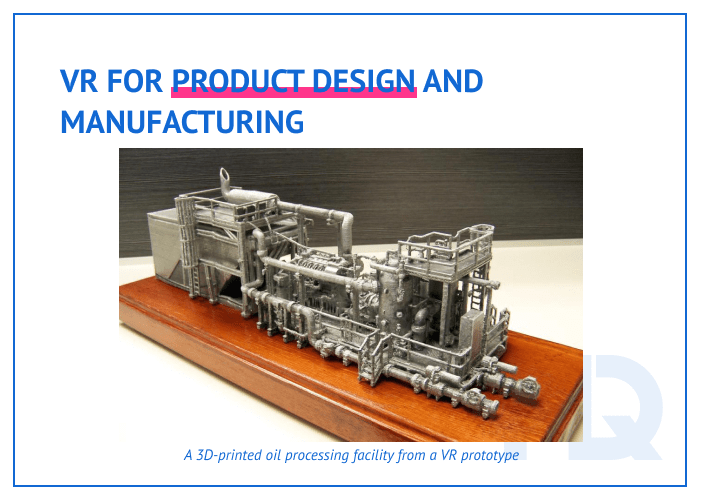
When a company is developing critical oil and gas equipment, VR reduces turnaround time by accelerating the process of product design. It reduces resource consumption by eliminating the need to manufacture a series of prototypes for testing.
It’s typically expensive and risky to train oil and gas industry service personnel. Proper professional training is a must, and as the technology moves on, industry requirements change, new equipment comes online with new operating methods, and workers need to upgrade their skills or even learn completely new ones.
Training in Virtual Reality brings the following benefits, especially in the oil and gas industry:
AR/VR solutions for the oil and gas industry – custom software for any purpose
Hire a team of skilled professionals at HQSoftware to tackle the project, be it immersive training or product design in VR. Let’s talk!
Anna Halias
Business Development Manager,
HQSoftware
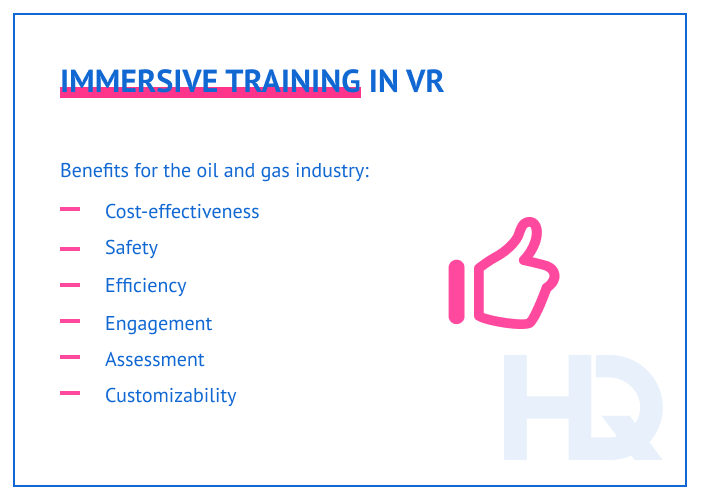
Along with all these benefits, VR training offers many potential scenarios for oil and gas companies. To name a few:
With the ability to recreate any scenario for training in a virtual environment and all the benefits of using VR, it is clear why businesses are choosing VR training over traditional education methods.
In the oil and gas industry, employees are often exposed to dangerous working conditions, where they are susceptible to harm from hazardous chemicals and gases.
These conditions can lead to disasters that your workers will have to manage somehow, or at least be able to react to properly to save their lives.
With VR, all possible dangers can be recreated inside a simulation. Which means all employees can be trained to respond to dangers without actual risk to their health.
For example, it is possible to develop VR solutions for:

Theory-based programs can’t fully prepare field workers and first responders for disasters that can happen in a plant. VR is highly superior to traditional education here; in VR, trainees are exposed to signs of danger and can train how to act around them. All this practical knowledge can then be applied to real-life disasters.
Now, let’s see how some actual companies are using simulations for day-to-day tasks.
Along with Virtual Reality, some oil and gas companies use Augmented Reality. Both can be described as immersive technologies.
Here are some examples of how they are successfully applying immersive tech:
ExxonMobil extensively utilizes immersive technologies for staff training. Field workers participate in immersive education programs to enhance applied skills or gain new ones.
The educational solution allows trainees to enter a virtual plant environment to obtain information about equipment and processes.
This solution, designed mostly for plant operators and engineers, simulates a set of real-life scenarios:
Shell uses Virtual Reality to build simulations for deepwater safety training. Shell’s workforce at the Malikai platform in Malaysia uses custom VR training solutions that incorporate a detailed 3D simulation of the Malikai platform.
In this simulation, workers learn operational safety procedures:
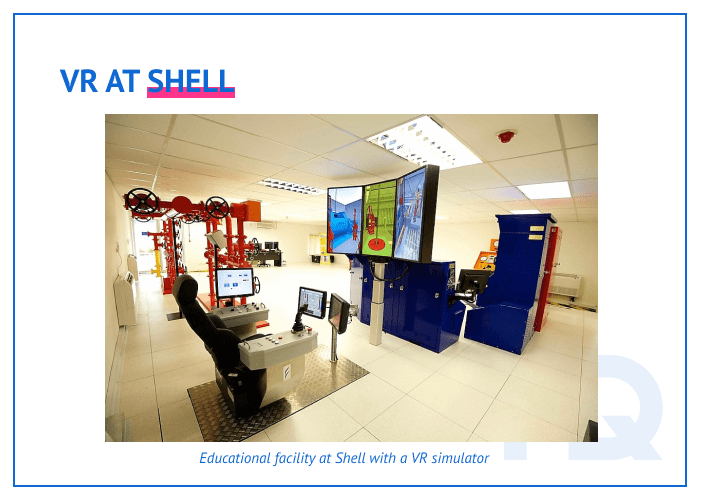
VR allows trainees to practice vital skills in a safe environment.
A General Electric oil and gas business, Baker Hughes is using smart AR helmets in the field.
The helmet is essentially a safety gadget that can display video streams, equipment schemes, and photos to a field worker. It has wireless headphones, a camera, and a microphone attached to the helmet, so that engineers can provide expert guidance and assistance remotely.
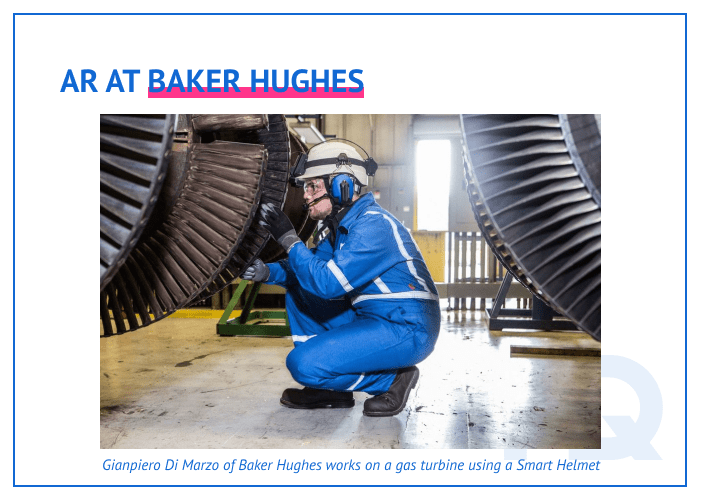
At HQSoftware, developers work with immersive technologies, applying their know-how to help companies solve business issues and introduce new, more efficient tools.
Here is one of our success stories.
AR has been used extensively in the oil and gas sector, and we at HQSoftware have found a perfect way to apply this technology for 3D visualization.
The customer is a company engaged in developing oil, gas, and renewables, and is the largest operator in Norway, providing power to more than 1 million homes.
The company was about to develop a new oil field in the Barents Sea, but the recent dramatic fall in oil prices interrupted the plan. The usual approaches to building production infrastructure and vessels were no longer viable, so the customer had to come up with a new design concept.
As a result, the company developed an advanced version of a floating production storage and offloading unit (FPSO).
To find a way to attract new investors, the company contacted HQSoftware to create a highly detailed 3D model of a vessel.
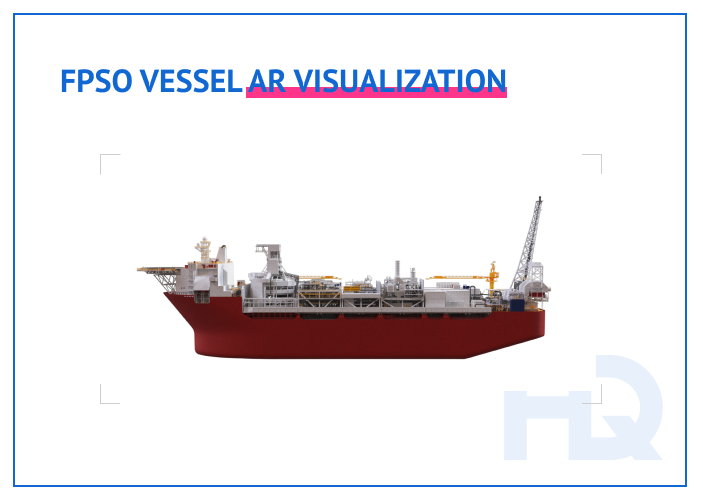
Partnering with HQSoftware, the customer delivered an AR mobile application that allows for viewing a 3D model of its new FPSO vessel. This eliminates the need to build a real prototype while providing investors with a detailed, interactive model of a new vessel.
The potential and real benefits of immersive technologies for the oil and gas industry go far beyond cost savings. Among these benefits are advanced training, proper disaster management, convenient remote collaboration and guidance, and more.
Using Virtual Reality, businesses from all industries reap the benefits of 3D visualization and simulation tools and can advance in the market, the way some large-caps already have, e.g. ExxonMobil.
Read more about our Virtual Reality development services here.
We are open to seeing your business needs and determining the best solution. Complete this form, and receive a free personalized proposal from your dedicated manager.

Sergei Vardomatski
Founder